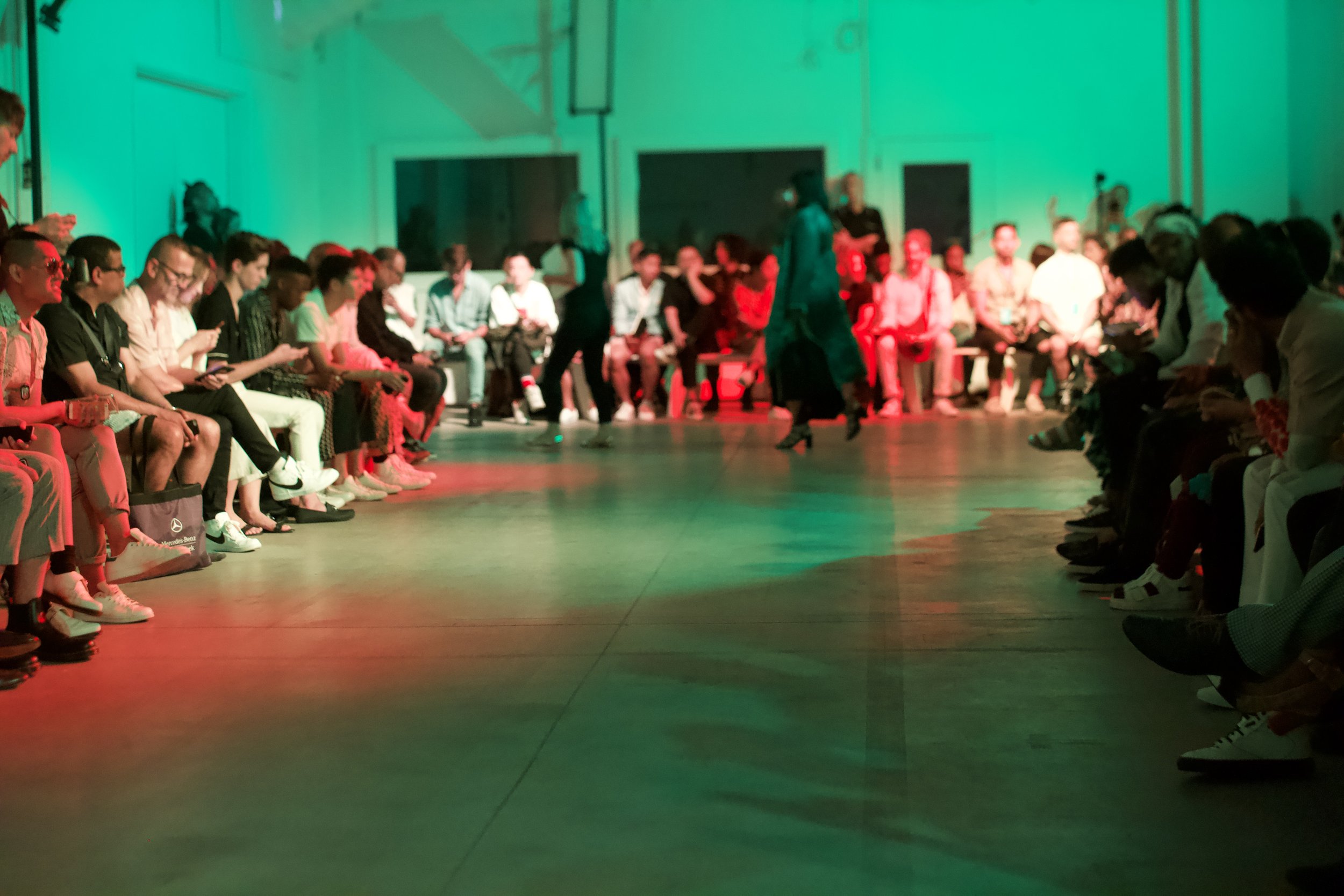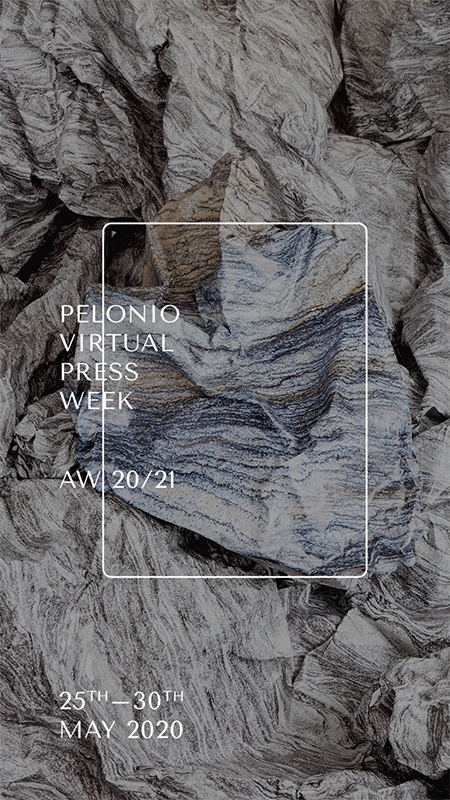Is Digital Runway the Future?
Throughout every industry, it is customary for both rookie and veteran professionals to gather together at specialized trade shows to showcase their latest and greatest product offerings. However, there is nothing that comes even remotely close to the energy, effort, blood, sweat, and actual tears that go into the apparel industry's bi-annual presentations, famously known as “fashion week.” Originating from serious, silent, and reserved events for haute couture clients only in Paris, the way designers showcase their collections to the public has shifted drastically over the years into a spectacle of theatrics, drama, and fantasy. Yes, there are gallons of free champagne and the rare opportunity to network with colleagues from around the globe, but the best part of fashion week by far is the moments leading up to and during the shows. Whether it is watching glorious models strut down runways in exquisitely tailored suits or seeing the increasingly innovative ways in which the members of the fashion press are dressed on the street…the most alluring part of fashion week to me is the ability to view the ways the garments are being worn both on and off the runway. It is a visual education and an intoxicating feast for the eye.
In September of last year, I remember practically sprinting from one end of Manhattan to the next as I rushed in a frenzy to get from show to show on time. All of it proved well worth it as I witnessed some truly wonderful masterpieces of design. There was the glitz, glamour, pink, and punk extravaganza of (I LOVE PRETTY), the electric vitality of Son Jun Wang, and the optimistic, peaceful, pastels featured in XU ZHI’s Spring/Summer 2020 Runways. The cherry on top of the pie of that season was being able to attend the YSL “Libre” fragrance launch party on the last night. I can still see and smell those great clusters of lavender and tall black opium candles burning at the Classic Car Club. There were models I’d seen on runways and in editorials for years, celebrities of all sorts, top influencers, and editors of major publications: all dressed in their absolute best. Leaving the venue I thought to myself: I can get used to this. Fast forward to around May of 2020. At this point, COVID-19 has ravaged the fabric of everyday life, completely shattering the way humanity as a whole operates. When it was first announced that fashion shows would be going digital I was initially devastated but I understood immediately and completely. My issue was with a huge collective of people jumping to conclusions and issuing rumors that there would never be in-person shows again.
Surely this virus would not stay around forever. The very essence of fashion is about ushering in the future as well as the joy of human interaction. Besides philosophical reasons, fashion week is traditionally intended for top magazine editors to pull looks from for editorials and for buyers from major retailers to select trends and clothes to put into their stores. Bygetting rid of the physical aspect of it all, the industry would collapse tremendously. I began to lose faith fast. Yet, as time progressed I realized that this pause could be a huge blessing in disguise. This forced halt for the industry has offered a rare and overdue reckoning regarding the issues of sustainability and diversity. This migration into digital fashion shows helps cut down major environmental effects (such as the gas emissions of planes from thousands of showgoers traveling internationally multiple times a year). I am fine with traditional fashion shows as I do believe that there is nothing that compares to getting all dressed up to attend the runway show of a talented designer in an extravagant venue. What I do hope for is that this period will inspire a future where designers show less frequently but the collections they do show are more inspired, intentional, and last longer. As a teenager, I remember tuning in to watch menswear collections from Dior Homme and Burberry on YouTube. Before I started attending runway shows and presentations in person, watching fashion shows online was one of the only ways to see the collections, aside from magazine campaigns or editorials. While I have not been allowed to be invited to view a digital fashion show this season, I have seen wonderful moments of fresh creativity while scrolling on Instagram. Favorites included Raf Simons and Miuccia Prada’s recent collaboration for their Spring/Summer 2021 womenswear collection in Milan.
Christian Siriano also designed an extraordinary collection that incorporated matching masks with the gowns in his backyard. Overall, I’ve been enlightened by the creative ways in which designers have arranged their seating to incorporate social distancing. It is reassuring to see how fashion has found a way to keep creativity going amidst all the chaos. The way everyone consumed products was already transforming rapidly before COVID-19, largely due to advances in e-commerce and social media. Designers including Tom Ford had already migrated into a See Now, Buy Now business model where clothes are available immediately for purchase after they are shown on the runway. Many still need to physically walk into a store, feel the fabrics, and try the clothes on before purchasing. I don’t think people will abandon the idea of shopping at a brick-and-mortar store, but as more designers hop on board with showing their collections digitally and having them more easily accessible online, I do predict that consumers will eventually follow suit in much larger quantities over time. To some, it may seem frivolous and unnecessary to be consuming clothes in the middle of a global pandemic.
However, I do believe that the human spirit will always have a desire for self-expression and making ourselves feel good.Just think of the ways that people are designing and decorating their face masks! Now more than ever, people want to feel better about themselves, so I do think fashion is and will always be a great avenue for satisfying that desire to feel good. Legendary street-style photographer Bill Cunningham once said in an interview “As long as there is humanity, there will be fashion.” The greatest benefit of technology is perhaps its ability to make products, news, and knowledge more accessible to everyone. Instagram has given many creatives the ability to express themselves on a broader scale. It also gives everyone an intimate view of the inner realms of their favorite brands, curators, photographers, influencers, stylists, and celebrities. While it is a great source of inspiration, it could never replace human interaction. People can scroll up and down their timelines all day long but it will never compare to the sensation of being able to see and feel clothes, furniture, or any product in real life. People need to feel the fabric of their clothes and try them on before buying them. I don’t think technology will ever replace that. The digitization of fashion will most likely get better as time and technology progresses.Science is becoming more and more advanced daily. I am not an expert on the evolution of things like flying cars, holograms, or virtual reality but one is consistently amazed at how technology and science continue to move us all forward.
If an idea could be adapted and developed that can help to simulate these aesthetic aspects of the buying process, I do feel that many would gladly jump on board, including myself. I do believe that the fashion industry has done a great job of showcasing collections for the audience it is initially intended for throughout this pandemic. Many of the major editors, buyers, and fashion directors seem to have their work cut out for them as brands have found creative ways to keep them fulfilled (i.e. Fendi sending custom packs of pasta to the fashion press). There can be room for improvement and I think that with time and as the pandemic slows down, things will be better than before. The use of Instagram Live is a greatway for consumers to be engaged. There are things such as the Occulus Quest Virtual Reality gaming device where people from all over can travel virtually anywhere they please with a special pair of headphones and glasses. Who’s to say this couldn’t be integrated into digital fashion shows to make us feel that we are there on the front row? Balenciaga did this before so it certainly can be done again. As time progresses, I have faith that labels from all around the world will continue to find new ways to engage the fashion press, buyers, influencers, and consumers alike. Fashion is known for being optimistic. The show must go on!



